What is second order thinking?
It’s tempting to give in to good outcomes with small upside that are easily accessible and visible to us without weighing in on the potentially large downside of our decisions in the future. Second order thinking is a decision-making approach that goes beyond the immediate, surface-level implications of a choice and instead focuses on the deeper and longer-term consequences and ramifications.
It's a valuable skill for making more informed and responsible decisions in various aspects of life, particularly in situations where the consequences are complex and far-reaching. By considering both the short-term and long-term implications of your choices, you can become a more effective decision-maker.
-
Take into account how various factors and variables interact and how decisions can affect the future.
-
Consider not only the immediate gains but also the potential long-term benefits and risks.
-
Explore alternative approaches and solutions, considering how each might affect the overall outcome.
-
Learn to do a careful assessment of potential risks and uncertainties associated with a decision.
-
Recognize that actions can have unforeseen and unintended consequences, which need to be assessed and managed.
In short, putting second order thinking into practice helps you "Optimize for long term gain at the cost of short term pain."
What is the difference between first order and second order effects?
Here are the key differences between first order and second order effects or first level and second level thinking:
First Order Thinking
-
Initial, intuitive, and often simplistic way that most people approach decisions.
-
Considers the immediate and obvious effects of a choice.
-
Often leads to straightforward, binary decisions based on short-term gains and losses.
-
Confines us to get the same results as everyone else.
Second Order Thinking
-
Involves a more complex and nuanced analysis with deliberate and logical thinking.
-
Considers not only the immediate consequences of a decision but also the potential ripple effects, unintended consequences, and the broader context.
-
Takes into account how various factors and variables interact and how decisions can affect the future.
-
Separates great thinkers from the ordinary who outperform others.
What is 2nd and 3rd order thinking?
When you consider only the first order effects of your decision, you start with your initial thoughts and instincts and analyze only the immediate or first-order effects of each potential choice.
What will be the immediate consequences of this decision?
This can make you ignore the potential implications of your decision in the future or not consider options with a better long-term gain.
2nd order thinking helps you reflect on any unintended or unexpected consequences that might arise as a result of your decision. It enables you to think beyond the immediate benefits and drawbacks.
How might the immediate effects trigger a series of additional consequences or actions?
3rd order thinking takes a step further by considering various scenarios and future possibilities resulting from your decision. Imagine how the second-order effects might unfold over time.
What are the potential long-term consequences of your decision?
What is an example of second order thinking?
Here's an example of second order thinking:
Situation
You got a job offer from a new company with a higher salary than your current job.
First order thinking
This is a great opportunity for me as the compensation is so much better.
Second order thinking
-
How does this new opportunity align with my career goals and values?
-
Is the company’s culture conducive to my long-term growth and development?
-
Will I be a good fit to the organization in the long run?
-
What kind of leadership exists in the organization and what are their views on long-term growth and future prospects?
-
Does the new job demand longer work hours that could impact my overall well-being over time?
By using your second order thinking skills, you can evaluate the consequences of your decision in the future and not based your decision on just one positive factor in the short-term.
What is the power of second order thinking?
The power of second-order thinking lies in its ability to provide a deeper, more nuanced understanding of complex situations and its potential to lead to more effective and strategic decision-making. Here are some of the key advantages and benefits associated with second-order thinking:
Anticipating Unintended Consequences: Second-order thinking helps you recognize and anticipate the unintended consequences of your actions. By considering not only the immediate effects but also the secondary and tertiary outcomes, you can make decisions that minimize negative repercussions and take advantage of positive ones.
Improved Problem-Solving: Second-order thinking encourages a more comprehensive analysis of problems. It allows you to consider the various factors and variables at play, leading to more effective and sustainable solutions.
Enhanced Risk Management: By evaluating the potential long-term consequences of a decision, second-order thinking enables better risk assessment and management. You can make choices that mitigate risks and provide a safety net against adverse outcomes.
Long-Term Planning: Second-order thinking is instrumental in long-term planning and strategy development. It helps you build a vision for the future that takes into account the evolving nature of complex systems.
Adaptation to Change: This approach promotes adaptability and flexibility in the face of changing circumstances. When you've already considered potential second-order effects, you're better prepared to adjust your strategies as situations evolve.
Conflict Resolution: In interpersonal relationships or organizational dynamics, second-order thinking can aid in resolving conflicts by helping you understand the underlying causes and effects of different actions and decisions.
Enhanced Creativity: Second-order thinking often leads to more creative problem-solving and innovation. It encourages you to think outside the box and explore alternative solutions that may not be immediately apparent.
Reduced Short-Term Bias: Many decisions are influenced by a preference for short-term gains, which can lead to negative long-term consequences. Second-order thinking counteracts this bias by encouraging a more balanced consideration of short-term and long-term impacts.
Systemic Understanding: Second-order thinking fosters a systemic understanding of complex issues. You gain a broader perspective on how different elements within a system interact, helping you see the bigger picture.
Better Decision-Making: Ultimately, the power of second-order thinking lies in making better decisions. By taking a more holistic and forward-thinking approach, you're more likely to achieve your goals and create positive outcomes.
It's important to note that second-order thinking is not a one-size-fits-all solution, and there are situations where quick, first-order thinking is appropriate. However, the ability to switch between first-order and second-order thinking depending on the context is a valuable skill that can significantly improve your problem-solving and decision-making abilities.
What is the impact of not applying second order thinking?
Second order thinking is a powerful decision making tool to help you think more deeply, critically and holistically.
Not applying second order thinking, particularly in situations where the consequences are complex and far-reaching, can result in terrible decisions.
In particular it can lead to:
Long-term losses: By focusing only on immediate benefits, you may make decisions where short-term gains come at the cost of long-term pain.
Unintended consequences: When you do not consider the long-term effects of your decisions, it can lead to unexpected and undesirable outcomes.
Missed opportunities: Not considering opportunities with positive outcomes compounded in the future can lead to missed chances for growth, improvement and success.
Loss of trust: Making shortsighted decisions without considering long-term implications can harm your reputation as others find it hard to trust your judgment.
Damage relationships: Misunderstandings and conflicts can harm relationships when the long-term impact of certain behaviors and actions is not taken into account.
Fail to adapt: Failing to anticipate change and not considering future trends can negatively impact the company's long-term viability and competitive positioning.
What is the most important thing in second order thinking?
Second-order thinking, also known as second-level thinking, is a cognitive approach that involves considering not only the immediate and obvious consequences of a decision or action (first-order thinking) but also the second-order, third-order, and further-reaching consequences. It's an essential skill for making well-informed and strategic decisions. The most important thing in second-order thinking is:
Anticipating unintended consequences
Second-order thinking involves recognizing that actions can have ripple effects and considering how decisions might impact various aspects of a situation or system. This entails looking beyond the immediate benefits or drawbacks of a choice and considering the long-term and indirect consequences.
Systems thinking
Understanding the interconnectedness of various elements within a system is crucial in second-order thinking. You need to consider how changes in one part of the system can affect other parts, and how those effects can circle back to influence the original decision.
Balancing short-term and long-term outcomes
Second-order thinking involves evaluating the trade-offs between short-term gains and long-term consequences. It's important to avoid making decisions solely based on immediate rewards and instead consider the broader impact over time.
Complexity and nuance
Second-order thinking requires embracing complexity and acknowledging that real-world situations are rarely straightforward. It involves considering multiple variables, perspectives, and factors that might influence the outcome of a decision.
Continuous learning and adaptation
Recognizing that second-order thinking can evolve and change as new information becomes available is essential. Being open to revising decisions based on new insights or shifts in the situation is a key aspect of this approach.
Embracing uncertainty
Second-order thinking acknowledges that the future is uncertain, and not all consequences can be predicted with certainty. It's important to be comfortable with uncertainty and to factor it into decision-making.
Overall, the most important aspect of second-order thinking is the ability to think critically and consider the broader implications and potential consequences of your choices. This skill can help you make more informed and strategic decisions in a variety of contexts, whether in personal life, business, or other areas.
What are second and third order questions?
Here are the first order, second order and third order questions to help you make more informed and thoughtful decisions:
First order effects
-
What are the immediate benefits or drawbacks of this decision in the next few days or weeks?
-
How will this choice affect me in the short term?
-
What is the most obvious outcome or consequence?
Second order effects
-
What could be the second-order effects of each choice?
-
What trends or patterns might emerge as a result of this decision over the next several months?
-
How will this decision impact my goals and objectives over time?
-
What factors could introduce uncertainty or variability into the outcomes?
-
What are the risks and uncertainties associated with this course of action?
-
How might external factors or changing circumstances affect the outcome?
Third order effects
-
What are the potential long-term consequences of this decision?
-
How will this decision affect my goals, relationships, or circumstances several months or years down the line?
When is second order thinking useful?
Second-order thinking is particularly useful in situations where complexity, long-term consequences, and indirect effects play a significant role. Here are some scenarios and contexts where second-order thinking can be valuable:
Investment and Financial Planning: When making investment decisions, second-order thinking helps you consider not only the immediate returns but also the potential long-term consequences, market dynamics, and economic trends. It can aid in risk management and portfolio diversification.
Business Strategy: In business, second-order thinking is essential for strategic planning. It allows you to assess the impact of decisions on various aspects of the organization, including employees, customers, suppliers, and the broader market. It also helps in recognizing potential market disruptions and emerging trends.
Personal Relationships: Second-order thinking can be applied in personal relationships, helping individuals understand how their actions and decisions affect their loved ones, friendships, and overall well-being in the long run. It fosters empathy and effective communication.
Education and Career Planning: When selecting educational paths or planning a career, second-order thinking assists in assessing the potential outcomes of your choices. This includes considering the job market, opportunities for growth, and the alignment of your skills and interests with your chosen path.
Project Management: In project management, second-order thinking helps you identify potential risks, dependencies, and the broader impact of project decisions on other aspects of the organization.
Conflict Resolution: Understanding the underlying causes and secondary effects of conflicts, both at the interpersonal and international levels, can aid in finding more sustainable and lasting resolutions.
Complex Problem-Solving: In complex problem-solving situations, second-order thinking is beneficial. It enables you to explore various solutions and assess their potential ripple effects on the entire system.
Innovation and Creativity: Second-order thinking encourages innovative thinking by considering how novel ideas or inventions may disrupt existing systems and lead to new opportunities or challenges.
While second-order thinking is valuable in many situations, it's important to note that it may not be necessary or efficient in every context. In routine, low-impact decisions or in emergency situations, first-order thinking may be more appropriate. Effective decision-making often involves a balance between both thinking styles, depending on the circumstances and the stakes involved.

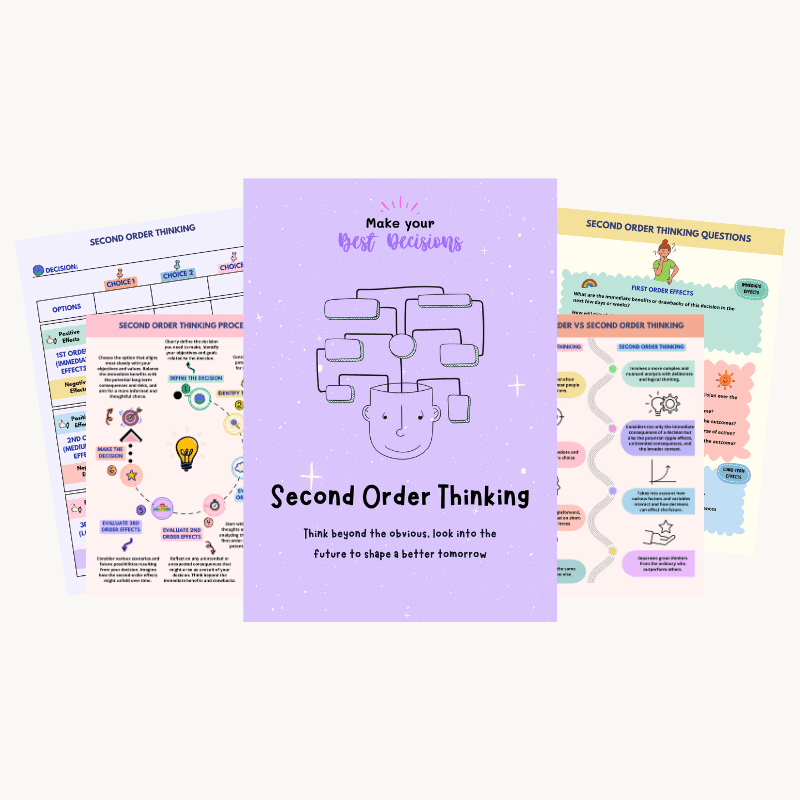
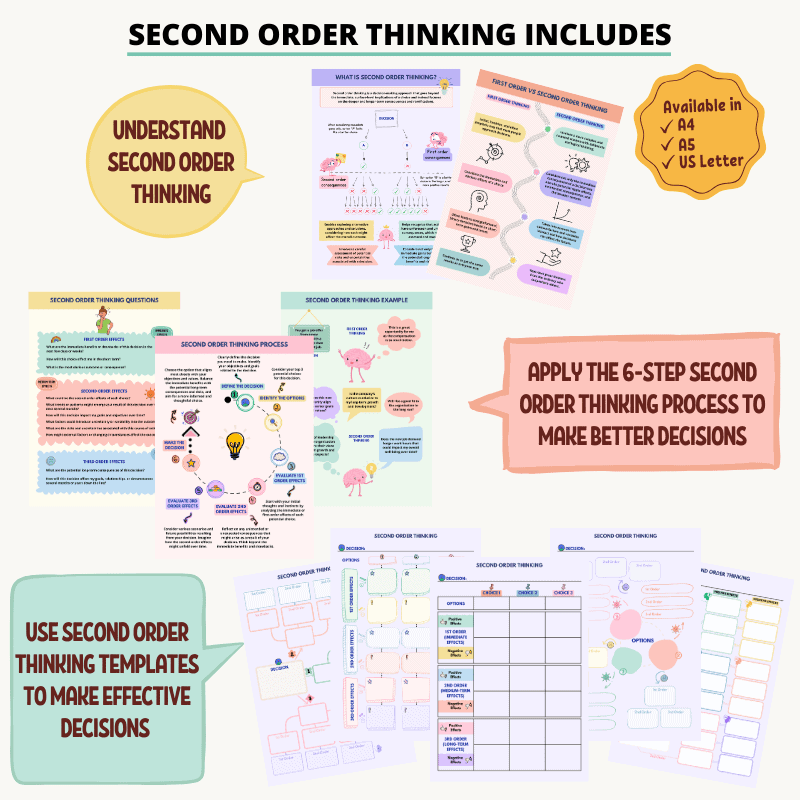
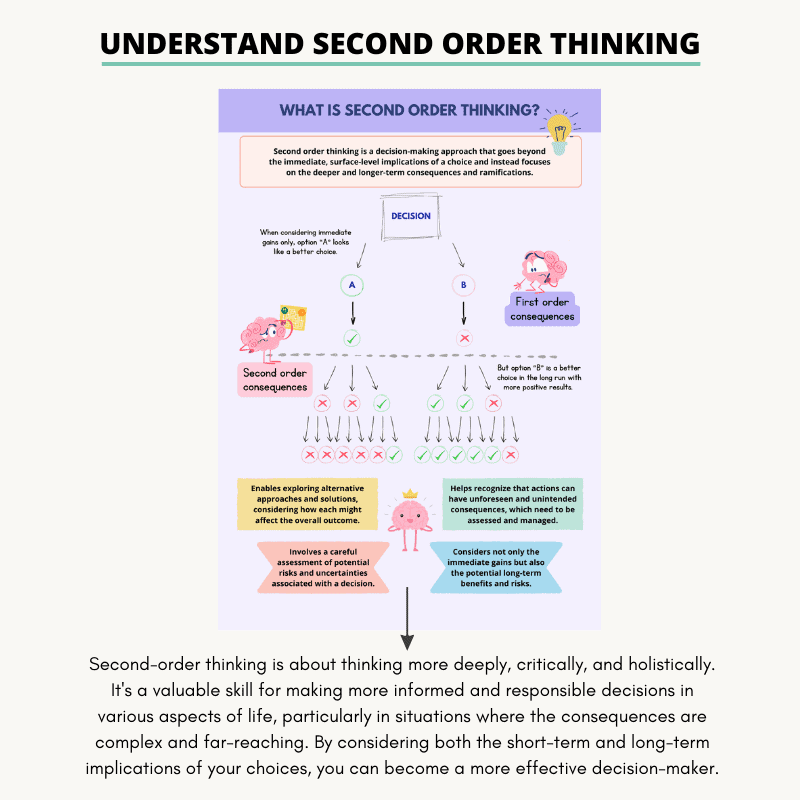
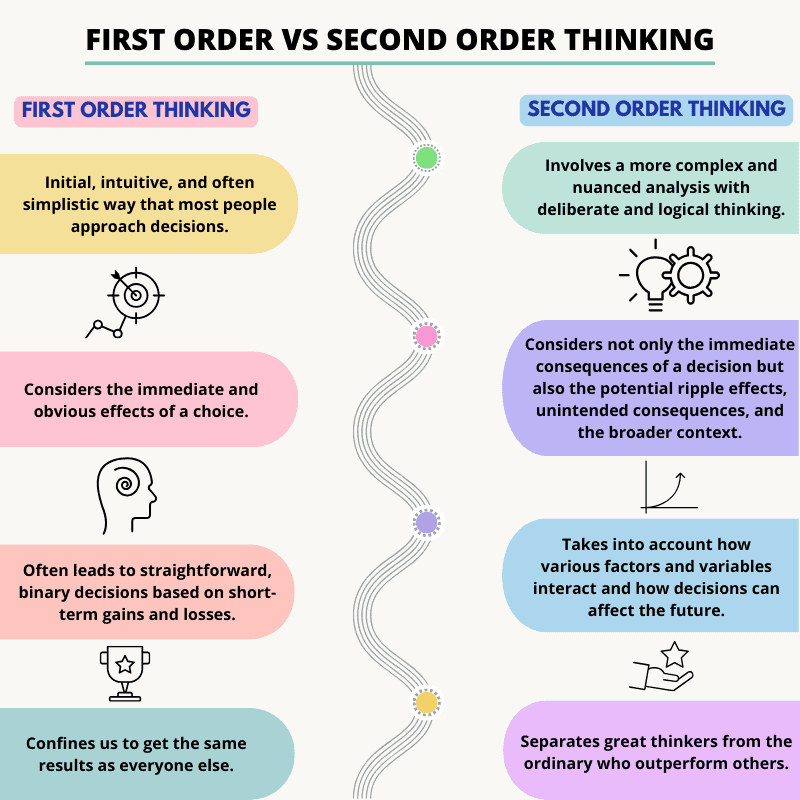
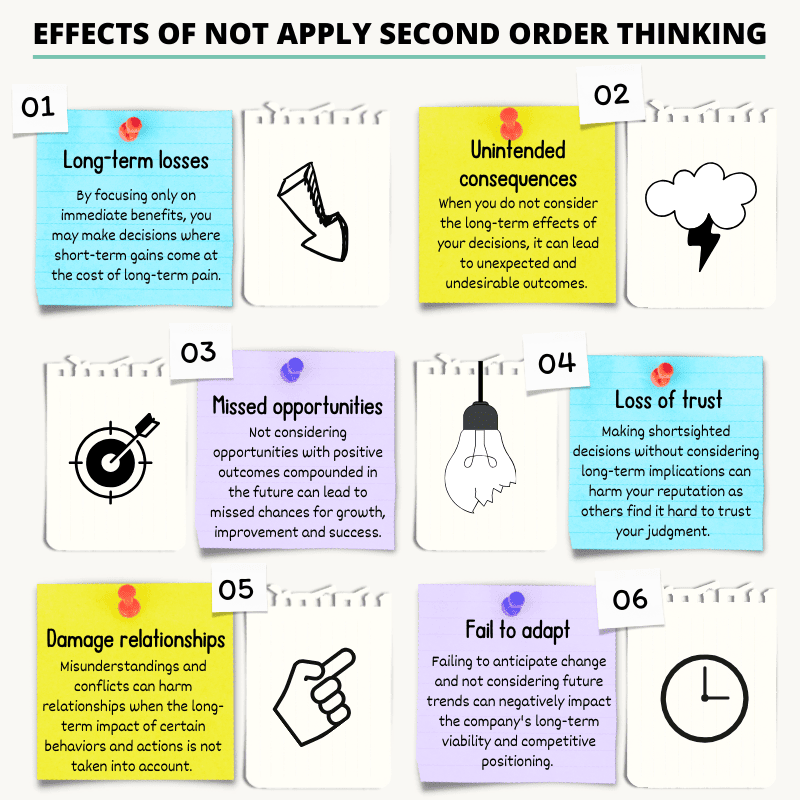
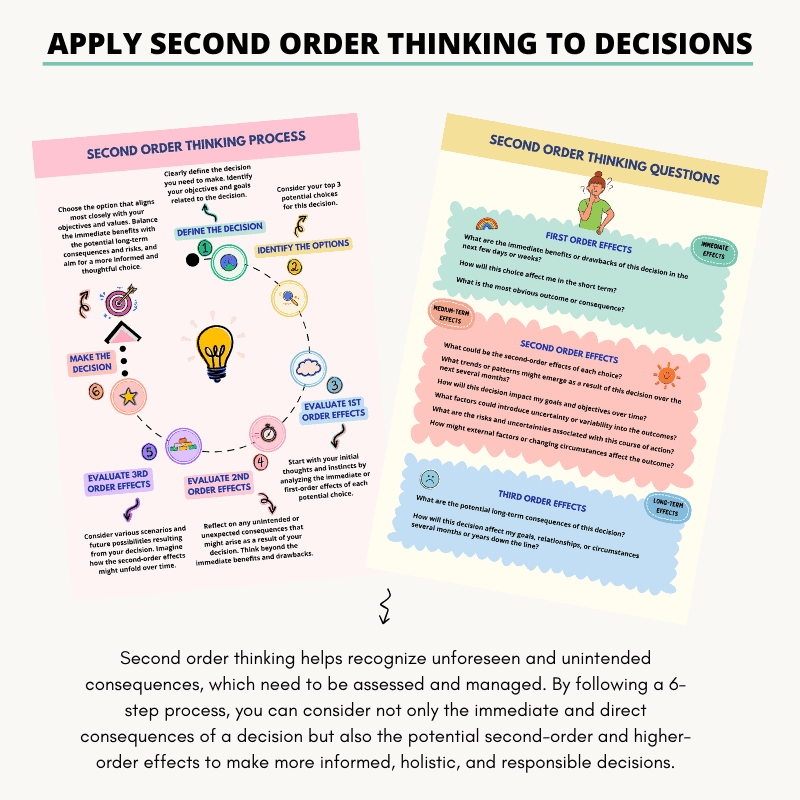
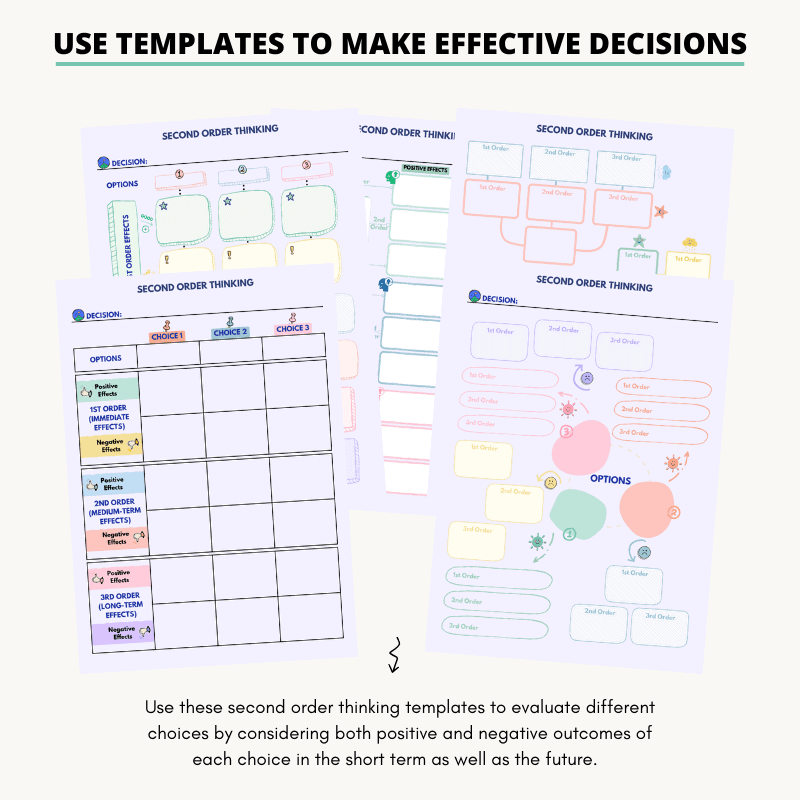
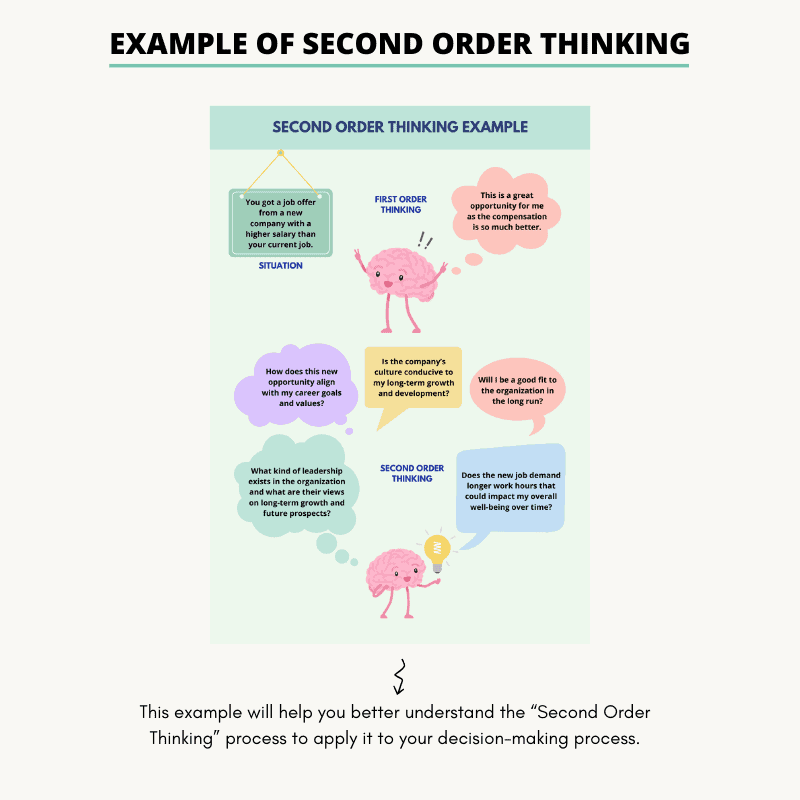
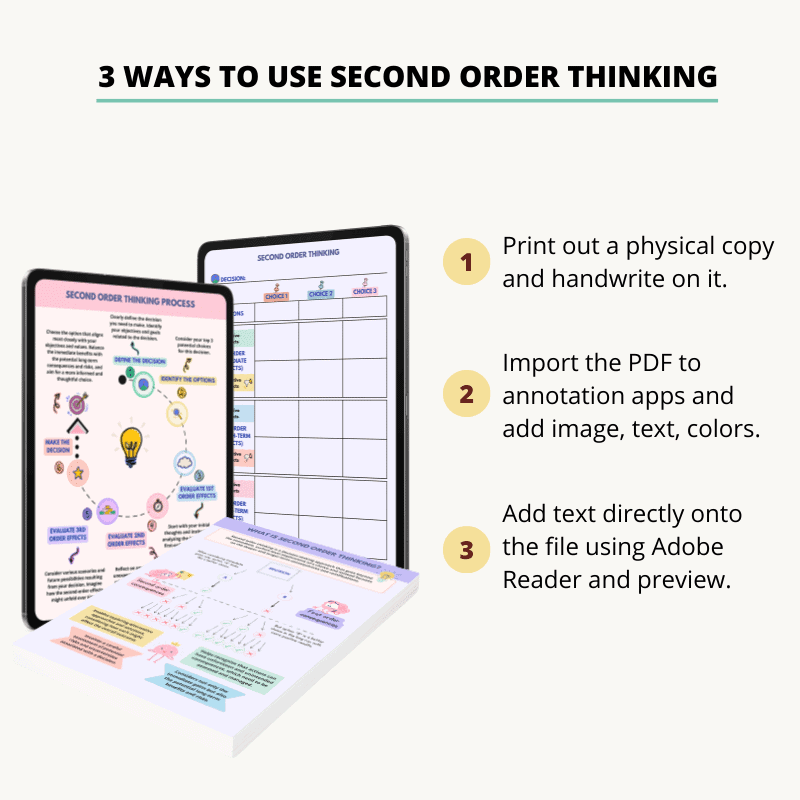
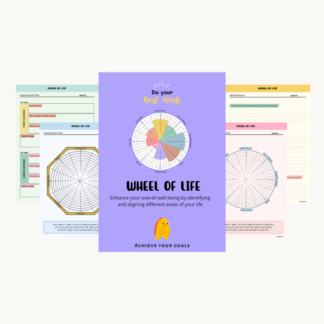
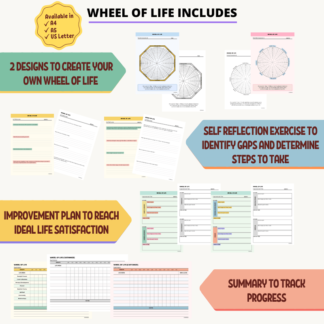
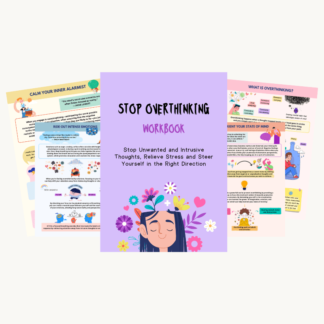
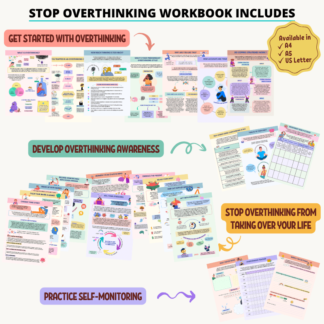
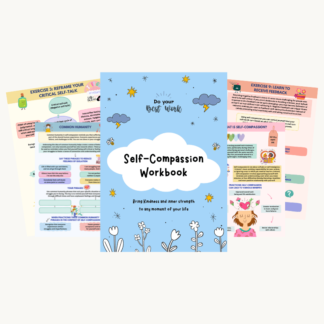
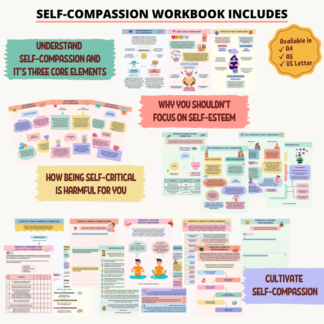
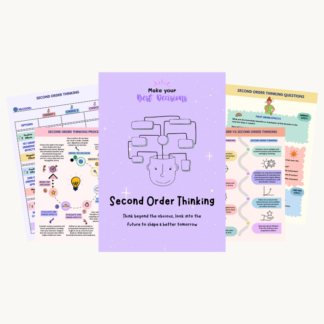
Reviews
There are no reviews yet.